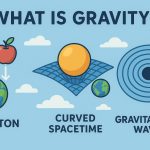Physics is built on precise laws that have stood the test of time—from Newton’s gravity to Einstein’s relativity and the quantum rules of the microscopic world. However, science never stops questioning itself. In the last decade, several groundbreaking discoveries and puzzling anomalies have emerged that could hint at physics beyond what we currently understand.
These findings don’t overthrow past theories outright—but they challenge their completeness and suggest that our picture of reality may still be incomplete.
1. The Hubble Tension: Is Our Universe Expanding Too Fast?
The Hubble constant measures how quickly the universe is expanding. But in recent years, two very different results have emerged:
- Early universe measurements (from the cosmic microwave background via the Planck satellite) suggest a lower expansion rate.
- Local measurements (using supernovae and Cepheid stars) indicate a faster expansion.
The discrepancy is statistically significant, and it persists despite improved precision. This could point to new physics, such as unknown forms of dark energy, exotic neutrinos, or a breakdown in general relativity at large scales.
2. Muon g-2 Anomaly: A Particle Breaking the Rules
In 2021, an experiment at Fermilab confirmed previous results from Brookhaven: the magnetic moment (g-factor) of the muon—a heavier cousin of the electron—deviates from predictions of the Standard Model.
- This suggests that undiscovered particles or forces may be influencing the muon’s behavior.
- If confirmed, it would mark the first clear crack in the Standard Model in decades.
Theoretical physicists are now exploring how this could relate to supersymmetry, leptoquarks, or dark sector particles.
3. Time-Symmetry Violation in Neutrinos?
Neutrinos are elusive particles with barely any mass. In 2020, the T2K experiment in Japan reported evidence that neutrinos and antineutrinos behave differently—violating CP symmetry, a key assumption in many theories.
- This may help explain why our universe is made mostly of matter, not antimatter.
- It could also reshape our understanding of symmetry and conservation laws in fundamental physics.
If confirmed, this discovery could open doors to new laws governing particle-antiparticle imbalance in the early universe.
4. Black Hole Paradoxes and the Firewall Hypothesis
The black hole information paradox—first proposed by Stephen Hawking—remains unresolved. New theoretical work proposes “firewalls” at the event horizon, contradicting general relativity.
- This suggests that quantum gravity may radically alter our understanding of black holes.
- Other proposals include holographic theories and entanglement-based resolutions.
The conflict between quantum mechanics and general relativity is still one of the most profound challenges in physics.
5. Dark Matter: Still Missing After Decades
Despite strong indirect evidence (galactic rotation, gravitational lensing), no direct detection of dark matter particles has yet succeeded. Experiments like XENONnT, LUX-ZEPLIN, and DAMA continue to hunt for WIMPs and axions, but come up empty.
- This forces physicists to consider alternative theories, like modified gravity (MOND) or hidden sector physics.
Dark matter remains one of the greatest unsolved mysteries in science.
Are We On the Brink of a Scientific Revolution?
Each of these findings represents small deviations, not wholesale rejections of current theories. But throughout history, major revolutions in science began with such anomalies—from heliocentrism to quantum mechanics.
We may be on the verge of a new paradigm that unites gravity, quantum fields, and cosmic structure in a deeper framework.
Glossary
- Hubble constant — The rate at which the universe expands.
- Muon g-factor — A quantum property related to the magnetic moment of the muon.
- CP symmetry — The principle that particles and antiparticles should behave identically under charge and parity transformation.
- Event horizon — The boundary around a black hole beyond which nothing can escape.
- WIMP — A hypothetical Weakly Interacting Massive Particle, a candidate for dark matter.


